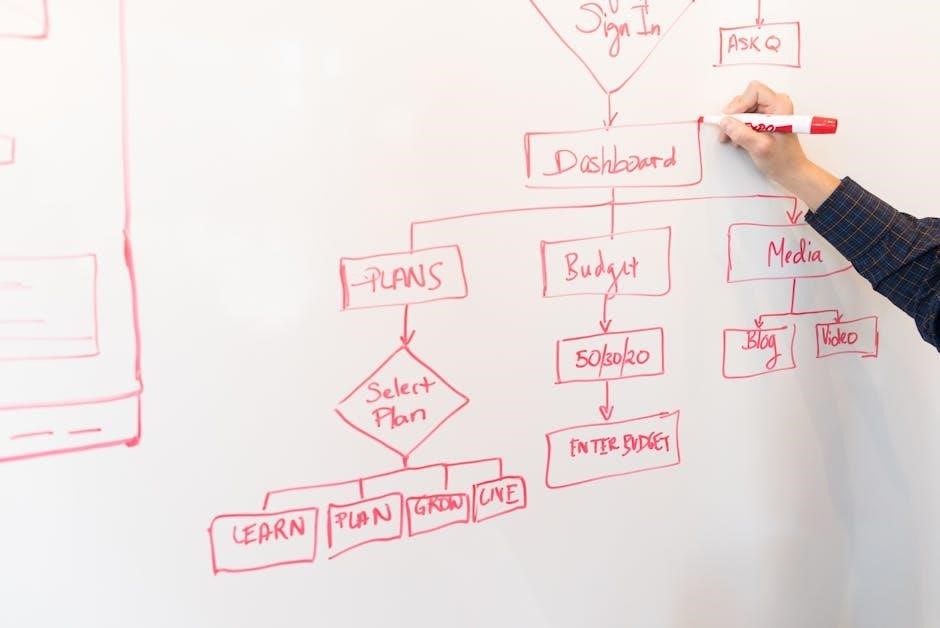Optimize your exam prep with our OAT Study Guide for success now online always.
Overview of the Optometry Admission Test
The Optometry Admission Test is a multiple-choice exam that measures a student’s knowledge in areas like natural sciences and reading comprehension.
The test is designed to assess the skills and knowledge necessary for success in optometry school, with sections on biology, chemistry, and physics.
The test is typically taken by students who are applying to optometry school, and is used as one of the factors in the admissions process.
The test is administered by the Association of Schools and Colleges of Optometry, and is taken by thousands of students each year.
The test is an important part of the optometry school admissions process, and students should prepare thoroughly to achieve a high score.
The test is scored on a scale, with higher scores indicating better performance.
The test results are used by optometry schools to evaluate applicants, and are often used in conjunction with other factors like grade point average and letters of recommendation.
The test is an important step in the process of becoming an optometrist, and students should take it seriously.
The test is offered at testing centers around the country, and students can register online.
The test is a standardized exam, and is designed to be fair and unbiased.
The test is an important tool for optometry schools to use in evaluating applicants, and is a key part of the admissions process.

Comprehensive Content Review
Reviewing content thoroughly for the exam is essential now online always daily.
Understanding the OAT Sections
The Optometry Admission Test is divided into four main sections, including natural sciences, reading comprehension, physics, and quantitative reasoning. Each section is designed to assess a specific set of skills and knowledge. Understanding the format and content of each section is crucial for effective preparation and to achieve a high score. The natural sciences section tests knowledge of biology, chemistry, and physics. The reading comprehension section evaluates the ability to read and understand scientific texts. The physics section assesses knowledge of physical principles and concepts. The quantitative reasoning section tests mathematical skills and problem-solving abilities. Familiarity with the test format and content is essential for success.

Study Strategies and Plans
Implement effective study plans and strategies now online always daily.
Creating an Effective Study Schedule
To create an effective study schedule, it is essential to set realistic goals and deadlines, and allocate sufficient time for each subject. A well-structured schedule helps to ensure that all topics are covered, and allows for regular review and practice. By prioritizing tasks and managing time efficiently, students can make the most of their study time and achieve their desired score. Utilizing a planner or calendar can help to stay organized and on track, and making adjustments as needed can help to maintain motivation and focus throughout the study period, leading to success in the oat study guide.
Resource Recommendations
Utilize the best study materials and resources available online always now.
Utilizing the Best Study Materials
To achieve success on the exam, it is crucial to utilize the best study materials available, including video crash courses and flashcards. These resources provide a comprehensive review of the exam content and help identify areas of weakness. Additionally, study guides and test simulators can be used to practice and reinforce learning. Many online resources offer access to a large database of test questions and explanations, which can be a valuable tool for exam preparation. By using these study materials, individuals can feel confident and prepared for the exam, and can increase their chances of achieving a high score and gaining admission to optometry school, with the right materials and support.

Preparation Tips and Tricks
Expert tips and tricks are essential for oat study guide preparation always online now.
Essential Test-Taking Strategies
Developing effective test-taking strategies is crucial for success in the oat study guide, including time management and question analysis techniques to improve scores.
Utilizing online resources and practice tests can help identify areas of improvement and optimize study plans, leading to better performance and increased confidence.
Understanding the exam format and content is also vital, enabling students to focus their efforts and make the most of their study time, ultimately achieving their goals and gaining admission to optometry school, with the right approach and mindset, anyone can excel and reach their full potential, achieving a high score and securing a place at their chosen institution, with careful planning and execution.
Full-Length Practice Tests
Simulate the actual test experience with our online full-length practice tests now.
Simulating the Actual Test Experience
Our full-length practice tests are designed to simulate the actual test experience, helping you prepare for the OAT.
With our tests, you can identify areas where you need improvement and develop strategies to overcome them.
Our practice tests include questions that cover all sections of the OAT, ensuring you are well-prepared for the exam.
By taking our practice tests, you can gain the confidence and skills needed to succeed on the OAT.
Our tests are available online, making it easy to access and prepare for the exam from anywhere.
You can review your results and track your progress, helping you stay motivated and focused on your goals.

Expert Guidance and Support
Trusted partners provide expert guidance and support always online now.
Trusted Partners for OAT Exam Preparation
Trusted partners have been helping students prepare for the exam since 2005 with comprehensive resources and expert guidance. These partners provide a range of study materials, including video crash courses and flashcards, to help students succeed. They also offer a test simulator with access to a large database of test questions and explanations. By working with trusted partners, students can gain the knowledge and confidence they need to perform well on the exam. With their help, students can create a personalized study plan and stay on track to achieve their goals; This support can make a big difference in a student’s success.
Final tips for success are provided to students online always now.
Final Tips for Success
To achieve success, it is essential to stay focused and motivated throughout the preparation period, using online resources and study guides effectively.
Utilizing the best study materials and creating an effective study schedule are crucial for optimal results, as stated by experts in the field of optometry.
Additionally, practicing with full-length practice tests and simulating the actual test experience can help build confidence and improve performance, leading to a higher score on the exam.
By following these tips and staying committed to the study plan, students can ensure they are well-prepared for the exam and increase their chances of success, ultimately achieving their goal of gaining admission to optometry school.
This will enable them to pursue their career in optometry with confidence and enthusiasm, making a positive impact in their community.
































